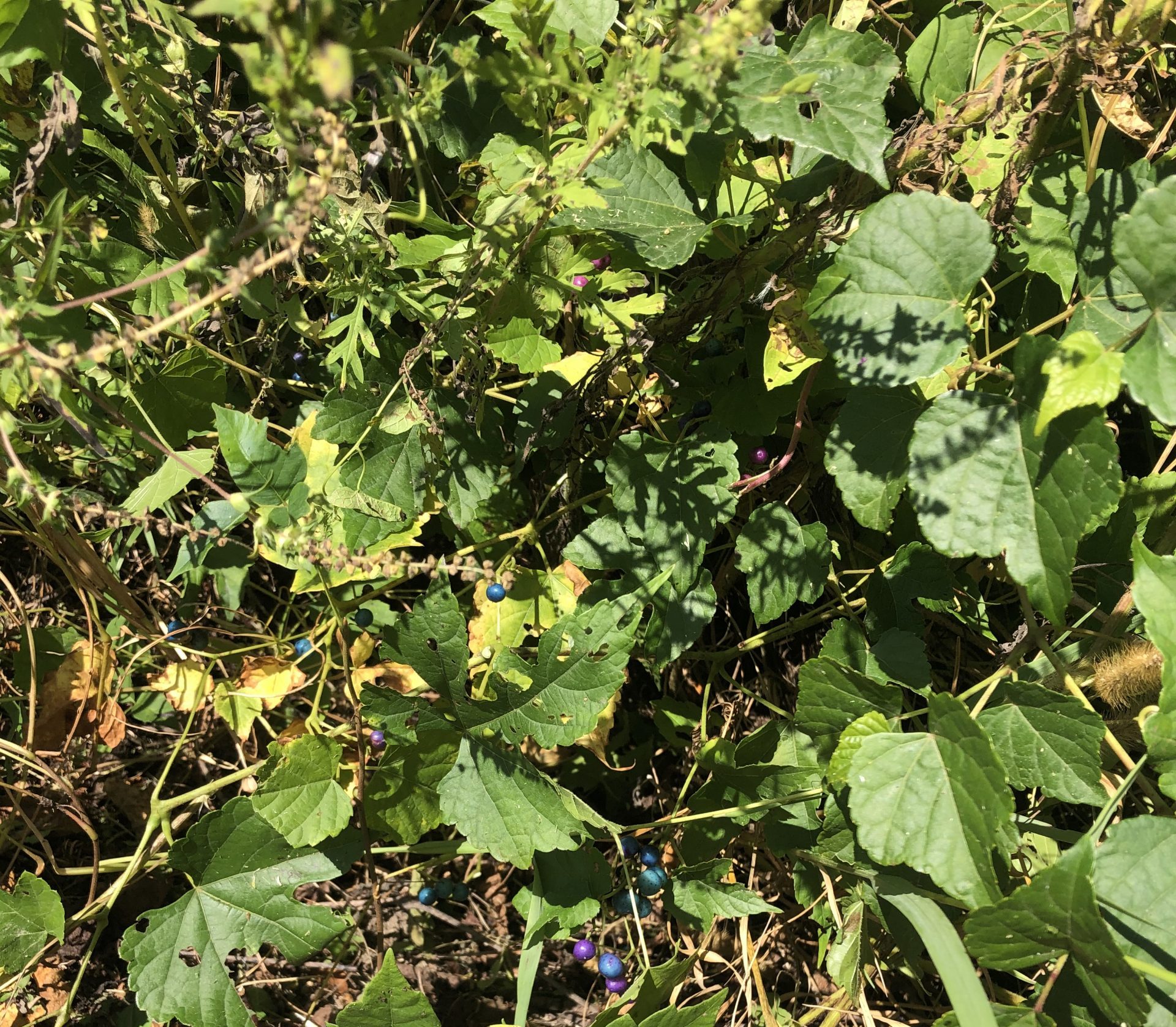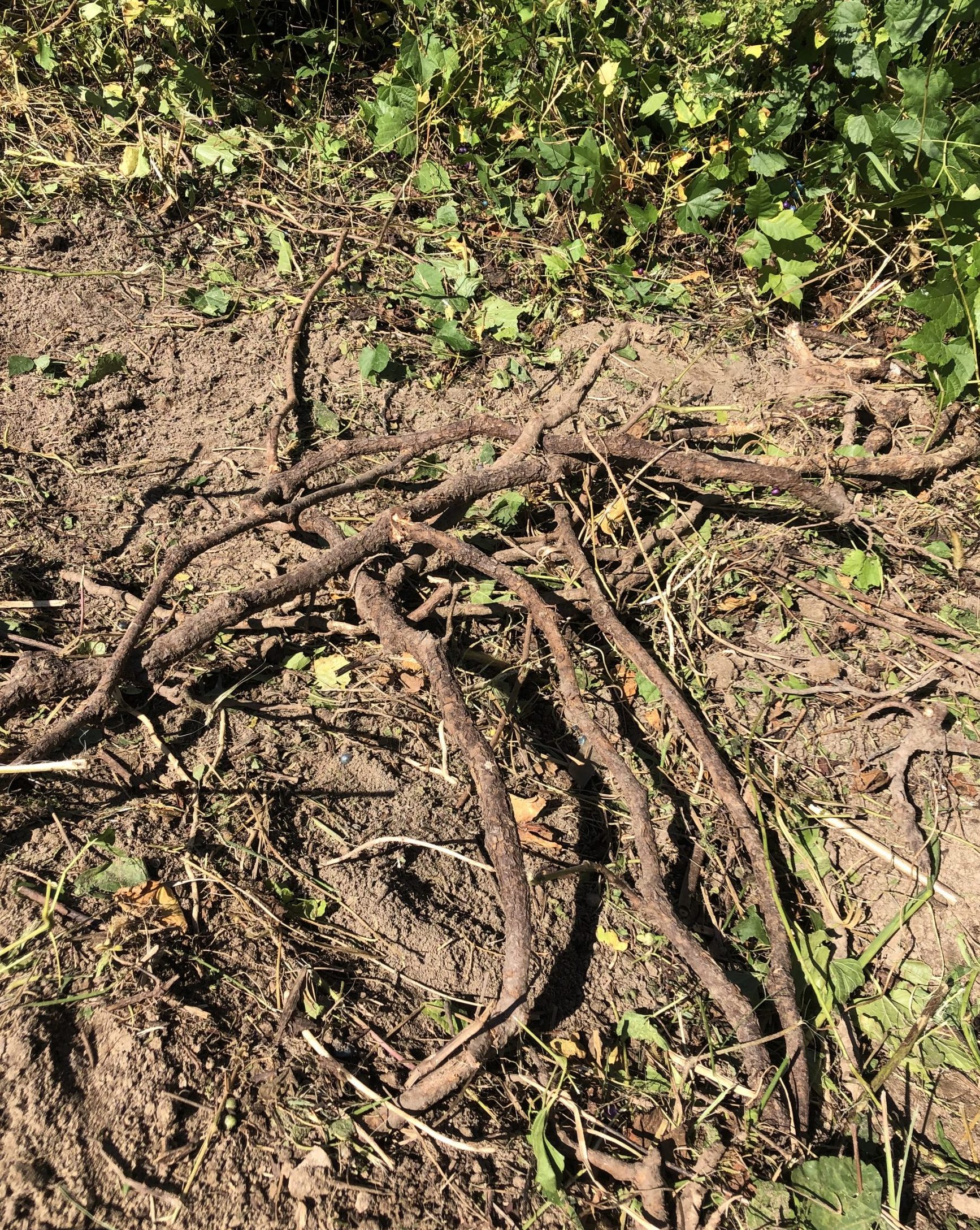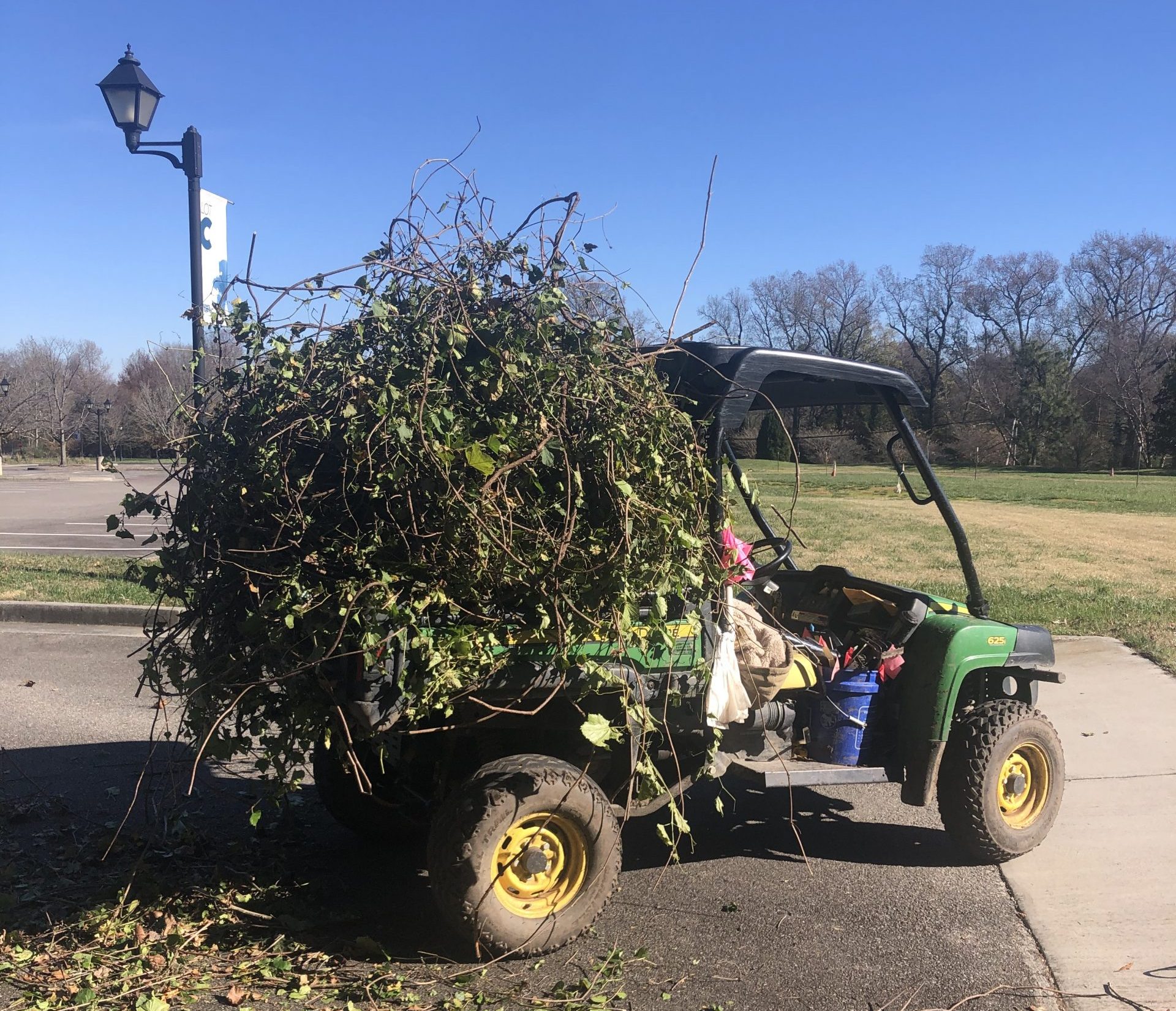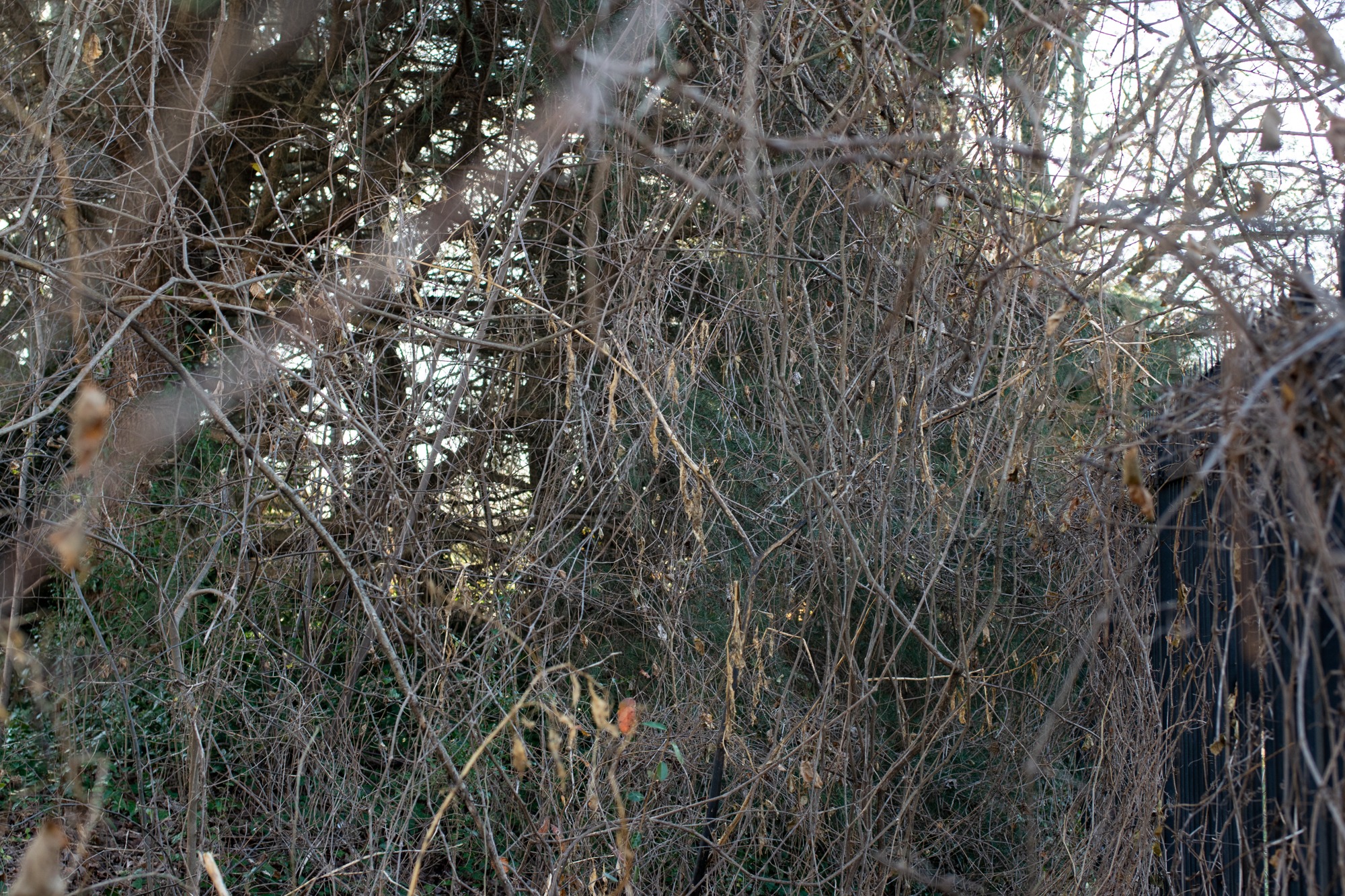Porcelain Berry: A “Dirty Dozen” Plant
This week’s featured member of the “Dirty Dozen” is Ampelopsis glandulosa var. brevipedunculata, commonly known as porcelain berry or amur peppervine. Most horticulture staff agree that this is the most pervasive of all invasive plants that we are currently battling at Lewis Ginter Botanical Garden.

Porcelain berry is shown in early fall displaying its blue and purple berries. Image by Sarah Coffey.
Porcelain Berry
Ampelopsis glandulosa var. brevipedunculata (syn. Ampelopsis brevipedunculata), is a member of the grape family (Vitaceae). This deciduous, woody vine develops vast root networks and can grow more than 20 feet tall if trees and shrubs are available for climbing. Its tiny white flowers bloom in mid-summer, which is followed by the colorful transformation of its berries from white to yellow, lilac, green and turquoise. Birds and small mammals spread this plant over long distances by eating its fruits. Porcelain berry also reproduces asexually by resprouting from roots.

A. brevipedunculata can form extensive root networks that are difficult to remove. Image by Sarah Coffey.
How Did it Get Here?
Porcelain berry is native to Japan and northern China and was intentionally introduced in the 1870s as an ornamental. It has been used primarily as a screening plant because of its attractive berries and ability to grow quickly on structures.
Where is it Found?
Geographic Region: A. brevipedunculata is listed as a high-risk invasive species (PDF) for the piedmont and coastal regions of Virginia, which includes Richmond, VA. You can see which United States counties have reported porcelain berry sightings using this map.
Habitat: One of the reasons why this nasty vine is so successful is that it grows well in almost all habitats. It does particularly well in damp, partially shady areas such as near water bodies, forest edges, and within thickets. We have found porcelain berry invading nearly every part of Lewis Ginter, from the parking lots to the Tree Trail.
What is the Impact of Porcelain Berry on the Environment?
Porcelain berry can completely engulf and shade out native trees and shrubs. It has the tendency to become a monoculture, thus reducing biodiversity in the habitats that it invades.
What Options Exist for Controlling Porcelain Berry?
Before deciding how to control for porcelain berry, first be sure that you have identified it properly. While its multi-colored berries are usually strong indicators, A. brevipedunculata can be confused with native grape species. Pages 28-29 of Mistaken Identity?: Invasive Plants and Their Native Look-Alikes (PDF) provide some useful tips for distinguishing porcelain berry from its native relatives. If you think you have found porcelain berry, be sure to report it to the Virginia Invasive Species Working Group.
Prevention: A. brevipedunculata is still popular in the horticultural trade. So the first step is to stop planting it and encourage others to do the same. For ideas of what to plant instead, read our native plant substitutes section below.
Mechanical: Seedlings are easy to remove and can be pulled by hand. Larger vines require shovels (spades are particularly useful for ripping up roots). In large patches or porcelain berry thickets, you may want to try using a line or blade trimmer to remove the foliage and then dig up roots. Pro-tip: hard rakes are useful for stripping vines off trees and shrubs. Be sure to remove and dispose of the entire root network, or else porcelain berry can grow back from root fragments with a vengeance. This is why it is especially important that you do not compost this plant!
Chemical: There are times when the use of herbicides may be necessary. For a better understanding of these circumstances, see our blog post on Chinese privet. If you think you should use herbicides to mitigate soil erosion or to prevent the damage of desirable plants landscape, the Virginia Department of Conservation and Recreation recommends (PDF) spot treatment with glyphosate. You may apply it to leaves or to freshly cut stems. Remember to follow all labels and consult with your local Virginia Cooperative Extension office for assistance if needed.
Timing: A combination of mechanical and chemical removal may be the best strategy for tackling a porcelain berry invasion (for example, hand-pulling smaller plants and spraying larger ones). Chemical and mechanical methods should be applied before it fruits since seeds can be spread by birds and/or remain in the soil seed bank for years. As such, you will need to follow up each year to remove seedlings until the seed bank is depleted.

A. brevipedunculata ready to be hauled off after being removed from an American holly (Ilex opaca). Image by Sarah Coffey.
What are Native Substitutes?
The following are great alternatives to porcelain berry that are native to Virginia’s Capital Region (Richmond): crossvine (Bignonia capreolata), Carolina or yellow jessamine (Gelsemium sempervirens), and trumpet or coral honeysuckle (Lonicera sempervirens).
Want to Know More?
For more information, check out Invasive Alien Species of Virginia (PDF), the Virginia Native Plant Society, and the USDA Plants Database.
Updated 3/18/2021
